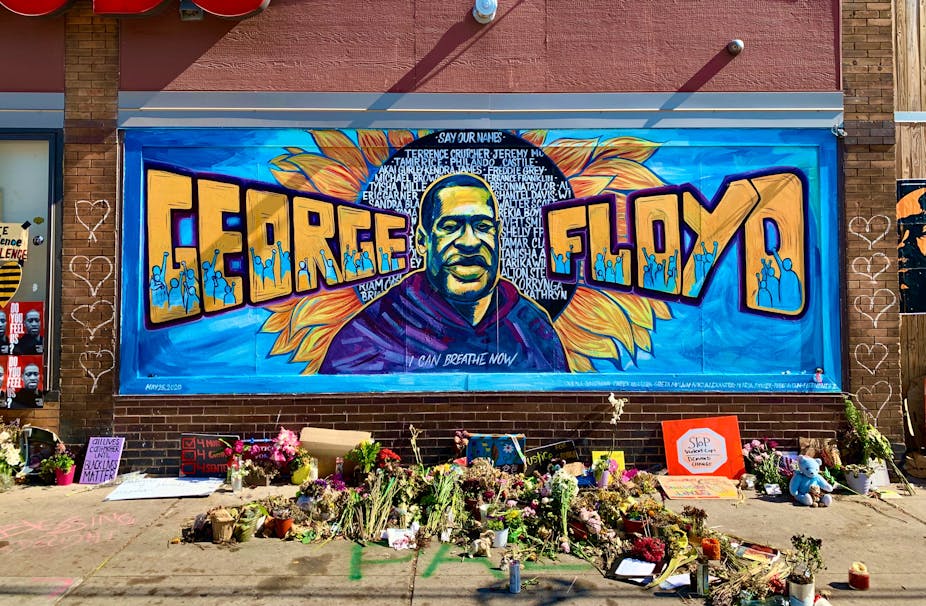During the COVID-19 pandemic, arranging protests and political movements in the streets has proven challenging due to social distancing orders.
Campaigns around the world such as the #ClimateStrike movement initiated by Greta Thunberg have moved online through the use of social media. The movement has now turned into #ClimateStrikeOnline, where hundreds of social media posts pour in every week.
Artistic posters on Twitter and dance choreography on TikTok have helped increase appeal for the movement among young people around the world and continue it in a more light-hearted way.
This movement’s sustainability and its ability to captivate audiences suggests these kinds of artistic approaches can be a great medium for activism in the digital space.
Arts activism — traditionally performed offline in the pre-social media era — combines the creative and emotional capacity of the arts with the strategic planning of activists to push for meaningful change in society online.
These three examples highlight how digital arts can help spark and sustain political engagement as it moves online amid the pandemic.
Stirring emotions to build political participation
Digital arts activism has the power to help people channel suffering, trauma or their outrage into persuasive messages.
Many studies have indicated this can help increase community engagement and political participation — from human rights advocacy to campaigns against discrimination and economic inequality.
Twenty-five-year-old Danielle Coke from Atlanta, for instance, is an illustrator who posts digital drawings on Instagram to advocate for important issues such as ending systemic racism.
Although she has criticised people for not crediting her appropriately, her work has been cited and shared by many people and to support a number of political movements such as #BlackLivesMatter.
For instance, some of the art she created discusses the cases of Ahmaud Arbery and George Floyd — two African-American citizens killed by local police on separate occasions. These artworks have since been used by thousands of people to voice outrage against institutional racism in America’s law enforcement system.
The iconic poster of the “ballerina and the bull” is another example.
The artwork, created by Micah White through his anti-consumerist magazine Adbusters, played a significant role helping initiate the Occupy Wall Street movement.
The poster contrasted the image of the Wall Street Bull statue — meant to symbolise the dynamics of capitalism — with the “zen stillness” of a ballerina.
These details, along with the shrouded figures in the poster’s background helped evoke a sense of fear and shared urgency regarding the country’s state of economic inequality. This helped pushed some to participate in, or at least become aware of, the #OccupyWallStreet movement.
The New York Times noted in an article that although the magazine through its poster did not come up with the frustrations felt by the movement’s protesters, it significantly shaped the movement’s aesthetic brand.
Sustaining the complexity of theatrical performances
The COVID-19 pandemic has caused many artistic movements to migrate into the digital space.
One example is “Conexion: Art and Activism in Oaxaca”. Originally planned as a showcase at the Newcomb Art Museum in Louisiana, United States, Conexion Oaxaca is an interactive digital exhibition by Latin American Studies students.
The digital exhibition highlights issues such as gender-based violence, access to education, family separation, and economic inequality.

Due to the pandemic, the exhibition has transformed into a fully interactive website that guides viewers throughout its four navigable themes which contain magazines, quilted art and documentary films.
However, it wasn’t always this easy.
The practice of staging art exhibitions online was once criticised for lacking what German philosopher Walter Benjamin calls an “aura of authenticity” — a sensory experience that results from an artwork being uniquely present in time and space.
However, the growth of social media has helped online exhibitions fulfil the basic principles of art; that it should be visible, versatile, suggestive and transmissible.
In fact, I argue that the viewing experience is enhanced as now artworks can be played back, examined thoroughly and intensively studied, on demand, by a diverse range of audiences.
Universities must teach arts activism to students
An effective way way to start making digital arts activism prevalent among students and young people is by incorporating it within higher education.
In most developing countries, however, art is currently still a highly specialised program in college. Activist movements, on the other hand, are often only studied only under faculties teaching the social sciences or humanities.
In order to complement the scientific methodology used in most natural and social science programs, universities need to incorporate art in each of their department’s curricula as part of the intellectual tradition of higher education.
King’s College London, for example, has been developing an interdisciplinary module titled “Art and Activism in the Digital Age” to be implemented across its study programs.
The university also collaborates with local artist and provides grants for digital art projects that are accessible even to students outside the Faculty of Humanities.
If we want higher education to have impact, students need to learn how to absorb experiences from events happening in their environment and channel them into meaningful initiatives. Digital art activism is a great way to help them do this.


